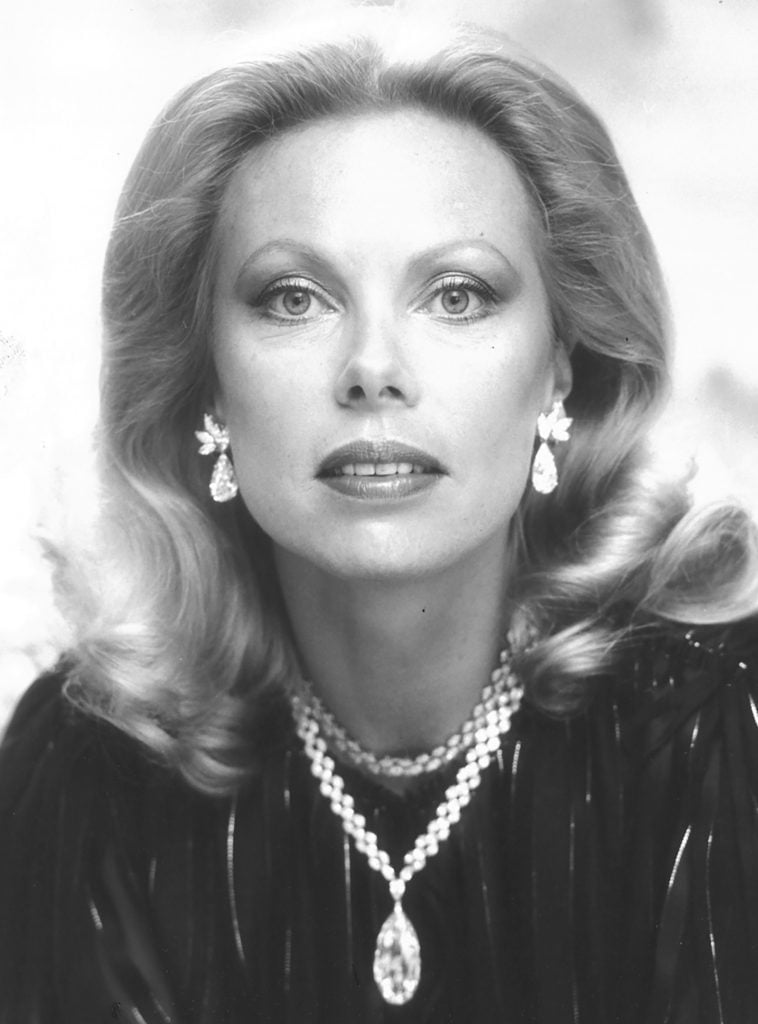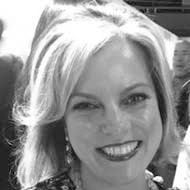On a recent Saturday morning, I got a call from a woman who introduced herself as Cathy Lasry. She sounded upset—very upset.
“Have you heard about the Heidi Horten jewelry collection at Christie’s?” she asked.
It vaguely rang the bell, but I was in the middle of an another complex story and, frankly, was coming up blank. A quick Google search revealed that the auction house had won the consignment of 700 jewels from the estate of an Austrian billionaire, who died last year.
Titled “The World of Heidi Horten,” the series of live and online auctions—taking place May 3 to May 15—included diamonds, pearls, and rubies crafted by Bulgari, Cartier, and other premier jewelers. Estimated at $150 million in total, the group’s valuation eclipsed the record-setting troves of Elizabeth Taylor and the Al Thani family. Christie’s promotional materials described it as a “glorious assemblage” of “impeccable quality and breadth, showcasing the art of jewelry in all its splendor.”
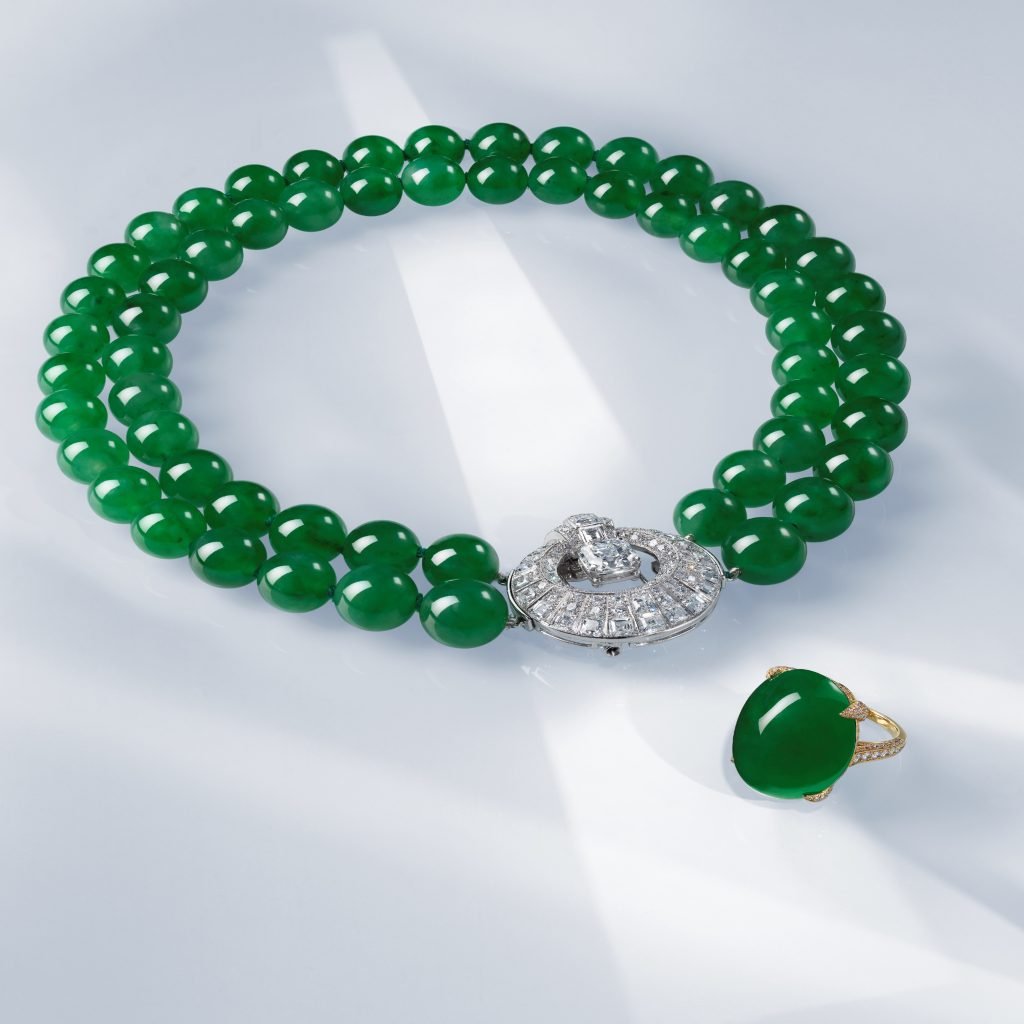
A two-strand jadeite necklace with a diamond/white gold Cartier clasp detachable and wearable as a brooch; and jadeite/diamond ring from Heidi Horten Collection. Courtesy: Christie’s
Under normal circumstances, Lasry, who is married to billionaire financier and philanthropist Marc Lasry, might have been interested in some of the trophies for sale. In April, however, a friend alerted her that the source of Horten’s wealth—the fortune that enabled her to amass such a remarkable collection—was rooted in Nazi profiteering of her first husband Helmut Horten.
There wasn’t a word about this troubling history on Christie’s website.
“Why would Christie’s have this auction and not tell people?” Lasry said. “It’s infuriating to me. I would never buy jewelry from this person. As a Jewish person and as a human being, I think it’s terrible.”
Heidi Horten was born in Vienna in 1941 and met her first husband, the department store magnate Helmut Horten, at a bar in 1959, my colleague Sarah Cascone wrote in an obituary. He was more than 30 years older. They married in 1966 and soon began building an art collection.
Helmut Horten died in 1987, leaving his widow a $1 billion fortune. She augmented it. At the time of her death, Heidi Horten’s net worth was $2.9 billion, according to Forbes. She died last June, 10 days after opening a private museum in Vienna; her collection had about 700 artworks, including major pieces by Pablo Picasso, Marc Chagall, and Francis Bacon, among others.
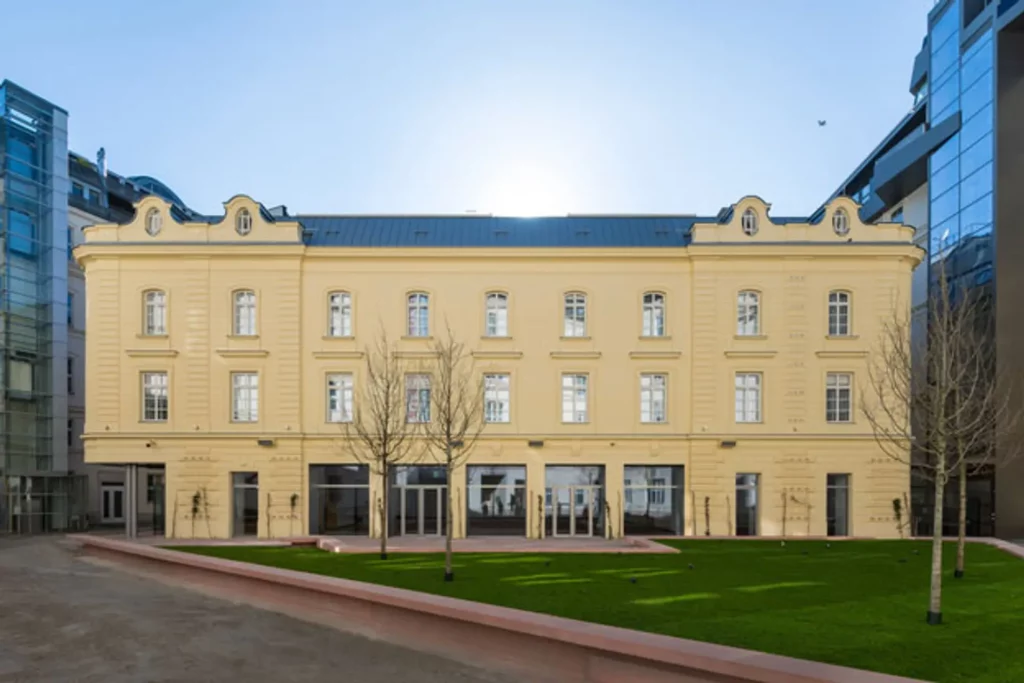
The Heidi Horten Collection museum in Vienna. Photo by Rupert Steiner, ©Heidi Horten Collection.
The omission of the source of Helmut Horten’s wealth seemed material to Lasry, who compared it to a hypothetical scenario of selling Ruth Madoff’s jewels and describing them as “Property of an Upper East Side Lady.”
If you substituted “The World of Heidi Horten” for “The Property of a Nazi’s Wife,” she wondered, how well would the auction do?
A longtime client of Christie’s, Lasry contacted the auction house to understand how something like this could happen. She was told she wasn’t the only one who complained and that the auction house is going to do something about it. She also was able to set up a subsequent meeting with a high-ranking Christie’s executive, who handles many of its restitution consignments.
In the meantime, Lasry went on a deep dive of her own, trying to get more information about Helmut Horten.
“Maybe he was a wonderful guy and gave people jobs and paid Holocaust survivors,” she said. “I have to give him a benefit of a doubt.” Not much was out there in English. An easy-to-miss link on the website of the Heidi Horten Collection led to a commissioned 2022 report, offering an “academic evaluation of Helmut Horten’s entrepreneurial activity during the Second World War.”
Conducted by a German historian Peter Hoeres of the University of Würzburg, it examined Helmut Horten’s “build-up of assets and business in the context of ‘Aryanization’ during the Third Reich,” according to the website. “The results show a differentiated picture of the businessman Helmut Horten and correct some rumors.”
Lasry clicked on the link and discovered 230 pages, complete with photographs, maps, and ample footnotes. It was all in German. She couldn’t read it.
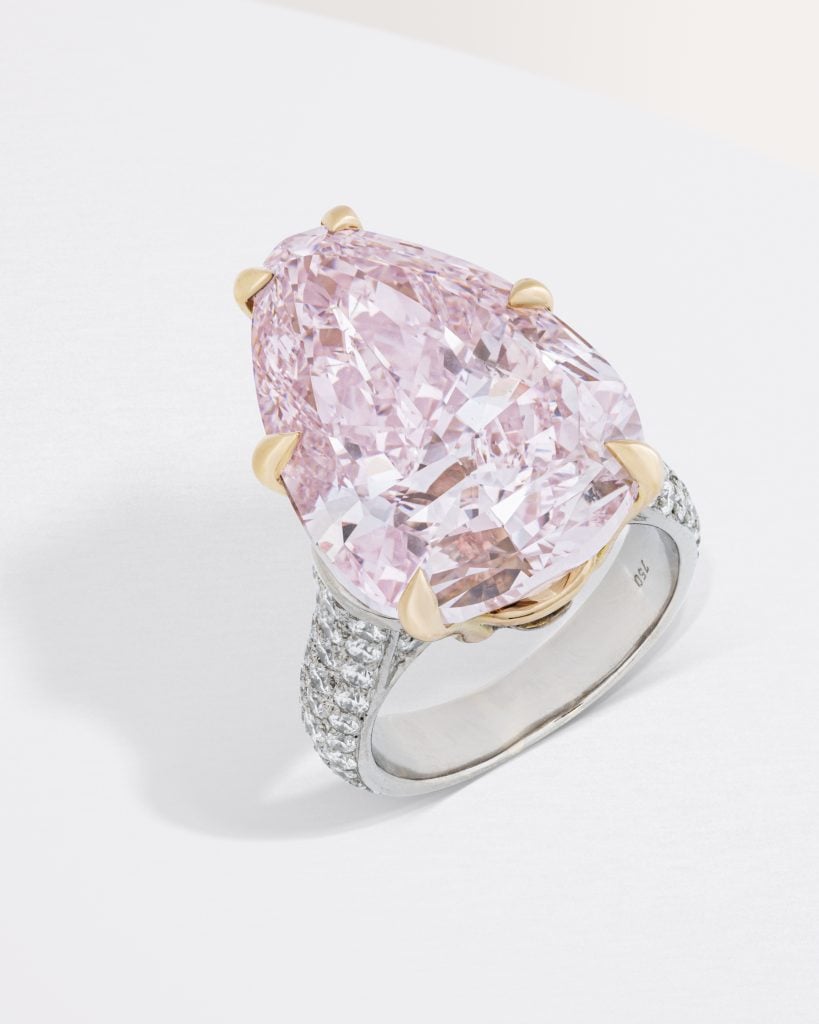
Fancy pink diamond of 20.06 carat from the collection of Heidi Horten. Courtesy: Christie’s
She emailed the foundation and asked for an English version. She also tried to translate the document, but quickly realized it was heavily encrypted.
“My IT department, people who do Wall Street security, they were trying to translate it for me electronically and they couldn’t do it,” she said.
The foundation eventually responded by forwarding Lasry’s inquiry to Gaisberg Consulting, which turned out to be a public relations firm specializing in crisis management. A representative emailed her a four-page synopsis of the report in English.
Reading them has made Lasry even more upset.
“Horten was intensively involved in the takeover of Jewish companies and profited from the situation of the Jewish owners,” it said, adding that these deals were “fairly negotiated” and largely driven by business opportunities rather than Nazi ideology.
Advantageous economic factors, for example, led Horten to use forced labor, the paper said.
“A complex example of the opportunistic premise of business activity is also Horten’s involvement with Flugzeugwerk Johannisthal GmbH,” according to the synopsis. “Before Horten was invested here, the company used forced laborers. This practice didn’t end with Horten’s and Wilehl Reinold’s acquisition of shares. It was even intensified, due to the worsening shortage of domestic labor.”
The report confirms that Horten—a member of the Nazi party—had profited from these and other operations during the war.
“He was a profiteer of Aryanization, acquiring Jewish department stores far below market value from 1936 onwards,” said David de Jong, the author of a book Nazi Billionaires.
De Jong said he didn’t include Horten in the book because it focused on multigenerational fortunes, whereas the Hortens didn’t have children.
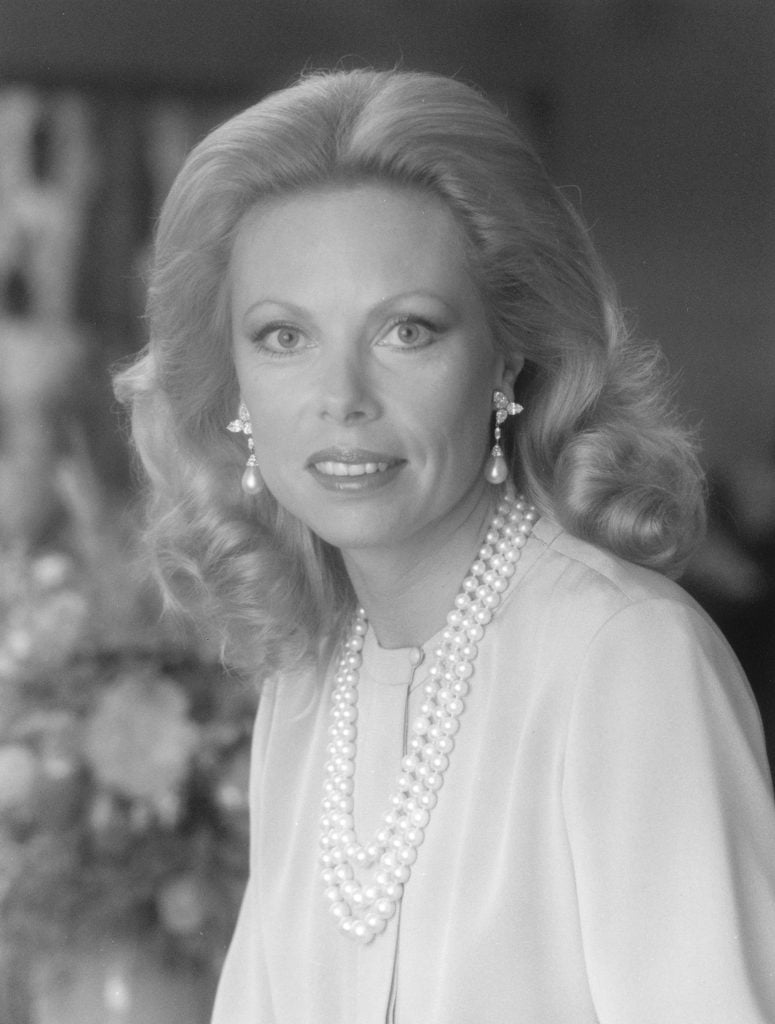
Heidi Horten wearing her important pearl necklace. Copyright: The Heidi Horten Foundation. Courtesy: Christie’s
The lack of English-language information encountered by Lasry was typical, de Jong said.
“It’s this insidious practice,” he said. “They commission these studies, but they are not translated into English. People bidding for these jewels in North America or Asia would have no idea how tainted the fortune is” that made their acquisition possible.
As for Lasry, she didn’t object as much to the sale of the collection per se as to the lack of information about the source of wealth used to acquire the pieces as well as where the sale’s proceeds were going.
“Where do you draw the line what to tell people and what not to tell people?” she said. “When you conceal something this major, it’s a problem.”
By the time Lasry brought her concerns to Christie’s, the collection was being previewed in London, having already toured New York, Vienna, Hong Kong, Taipei, Shanghai, and Taichung.
Finally, on April 26, just as Lasry was getting ready to meet with the Christie’s executive, she saw that the auction house had updated its materials to acknowledge the Nazi roots of Horten’s wealth.

The Cohen-Lasry House has been the home of the Strassler Center for Holocaust and Genocide Studies since 1999. Courtesy: Clark University
“Mr. Horten, her first husband, passed away in 1987, leaving a significant inheritance to Mrs. Horten, the source of which is a matter of public record,” the addition reads. “The business practices of Mr. Horten during the Nazi era, when he purchased Jewish businesses sold under duress, are well documented.”
So, why was this information not included from the beginning?
“It was never Christie’s intention to hide information about the well-documented history of Mr. Horten, and we have added relevant information to our sale materials and website to ensure that the facts are clear to all,” Guillaume Cerutti, Christie’s chief executive officer, told the Art Detective in a statement.
The company decided to add explicit language on the Nazi origin of Helmut Horten’s wealth as a result of internal discussions and conversations with various stakeholders, including clients, a spokesperson told me.
“We have engaged in both thoughtful and constructive conversations with those who have reached out to us to openly address their concerns,” said Anthea Peers, president of Christie’s EMEA. “At the same time, we appreciate our clients’ candor about the way we’re handling the auction and their support of our efforts to enhance transparency.”
She added that Christie’s was “aware there is a painful history, and we weighed that up against various factors, including that the proceeds will be a key driver of philanthropic causes, and the fact that this is one of the most beautifully created collections that will ever come up in the jewelry world,” she said.
In addition, Christie’s said it will donate “a significant contribution from its final proceeds” to an organization advancing Holocaust research and education, Cerutti said.
For her part, Lasry is pleased with the updated auction text, and heartened that some of the money will go to Holocaust eduction. It’s a subject dear to her heart. In 1997, Lasry and her husband pledged funds to purchase and refurbish a turn-of-the-century villa to house the Strassler Center for Holocaust and Genocide Studies at Clark University in Worcester, Massachusetts. Known as the Cohen-Lasry House—after Cathy Lasry’s father Irwin Cohen and father-in-law Moise Lasry—it opened in 1999. The Lasrys also funded the position of a visiting professor in genocide studies through 2015.
“I’m happy Christie’s did the right thing, and I applaud that,” Lasry said. “I still wouldn’t buy any of the jewelry from this collection. But I am looking at some art to buy at upcoming auctions.”
